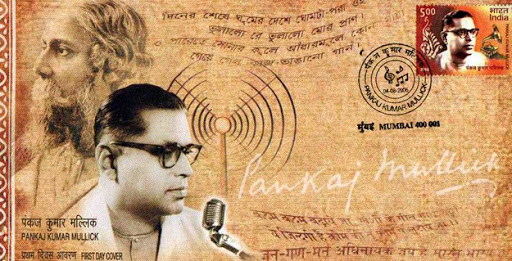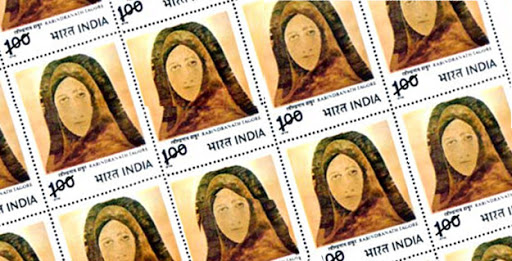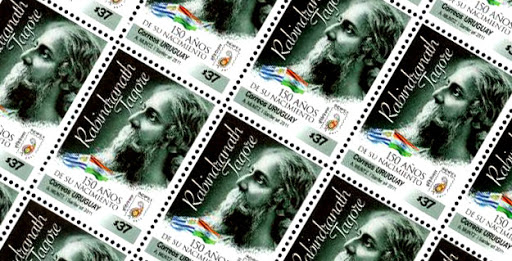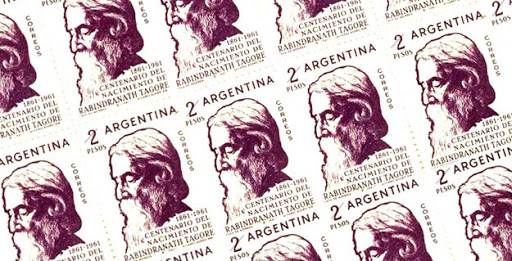-
 Rabindra Sangeet And Pankaj Kumar Mallick
Rabindra Sangeet And Pankaj Kumar Mallick
-
 Rabindranath Tagore And His Play Post Office
Rabindranath Tagore And His Play Post Office
-
 Rabindranath Tagore As A Painter
Rabindranath Tagore As A Painter
-
 Uruguay Release On 150th Birth Anniversary
Uruguay Release On 150th Birth Anniversary
-
 Tagore Visits Argentina
Tagore Visits Argentina

Rabindra Sangeet And Pankaj Kumar Mullick
Rabindra Sangeet And Pankaj Kumar Mullick . Click Here

Rabindranath Tagore And His Play PostOffice
Read About Tagore And His Play Post Office...Click Here

Stamps On Paintings Of Rabindranath Tagore
Stamps Related To Tagore As A Painter....Click Here

Uruguay Celebrates 150yrs Of Rabindranath Tagore
Many Countries Will Release Stamps On Tagore..Uruguay was the first Click Here

Rabindranath Tagore And Argentina
Rabindranath Tagore And Argentina....Read more
Saturday, November 19, 2005
Thursday, November 17, 2005
Sunday, November 13, 2005
India Stamps 2005 : M.S.Subbalakshmi
|
|
Madurai Shanmukhavadivu Subbulakshmi popularly known as M.S. or M.S.S.) (September 16, 1916 - December 11, 2004) was a renowned Carnatic vocalist. Her mother tongue was Tamil. She was the first musician ever to be awarded the Bharat Ratna, India's highest civilian honor.
M.S.Subbulakhsmi was born to a musical family, in the temple town of Madurai, situated in the state of Tamil Nadu in South India. M.S. started learning Carnatic music from a very early age and released her first recording at the age of 10. She then began her Carnatic classical music training under Semmangudi Srinivasa Iyer and then Hindustani classical training under Pandit Narayan Rao Vyas. Her first public performance was during the Mahamaham festival at Kumbakonam. At 17, the child prodigy made her debut at the Madras Music Academy. Since then, she performed countless musical forms in different languages such as Hindi, Bengali, Gujarati, Marathi, Tamil, Malayalam, Telugu, Sanskrit and Kannada.
M.S. became famous as a film actress. Her most memorable role was Bhaktha Meera in Meera (1945). The movie had M.S. sing the famous Meera bhajans, with Dilipkumar Roy as the music director. Those renditions by M.S. continue to enthrall listeners to this day. Following the success of the film she quit films and turned wholly to concert music.In total she has acted in five films spanning a decade. The list includes Sevasadanam, Savitri, Meera(Tamil) and Bhakti Meera( Hindi).
M.S. met Sadasivam, a freedom fighter, and a follower of Rajaji, in 1936. She married him in 1940 and their marriage spanned over 50 years. They had no children. Sadasivam had children from his previous marriage that M.S. treated as if they were her own children. They were named Radha, Vijaya. M.S and Sadasivam also raised Sadasivam's nephew Ramachandran (Ambi) and niece Thangam, who were orphaned at a young age. Radha frequently sang with M.S. in concert while Vijaya played the Tanpura. They lived in a mansion named "Kalki Gardens", and as Radha, Vijaya, Ambi and Thangam grew up, their children also lived in the mansion with M. S., or as they affectionately called her, Ammu Patti.
M.S. travelled to London, New York, Canada, the Far East, and other places as India's cultural ambassador. Her concerts at Carnegie Hall, New York; the UN General Assembly on UN day in 1966 (while U Thant was the Secretary General); the Royal Albert Hall, London in 1982; and at the Festival of India in Moscow in 1987 were significant landmarks in her career.
As a first-time foreign listener put it, "M.S. does not sing. She makes divinity manifest." Mahatma Gandhi was so charmed of her Meera bhajans that he requested her to sing the song Hari Tum haro Jan ki bheer (Lord, please dispel the fear in mankind). A message had been sent to Madras that Gandhiji wished M.S. to render his favourite bhajan, "Hari tum haro", and a response had gone from husband Sadasivam to the effect that since she did not know how to sing this particular bhajan, somebody else could sing "Hari tum haro", and she could sing another bhajan. A reply had promptly come back on behalf of the Mahatma: "I should prefer to hear it spoken by Subbulakshmi than sung by others."
In the late 1950s, as she sang at the Ramakrishna Ashram in Delhi, Pandit Jawaharlal Nehru, India's first prime minister, was among the audience. At the end of the recital he was so moved that he bowed, and said, "What am I, a mere prime minister before a queen of music (he was to repeat it in every speech of his, praising her)."
Not unexpectedly, "she talks, sings and lives music twenty-four hours a day," and is deeply religious. The puja (prayer) room in her house has three life-size portraits of Sri Chandrashekarendra Saraswati Sankaracharya, the saint whom she calls "divinity in flesh and blood," and who has "been instrumental in restoring the faith and religious temperament of the people of Madras and reclaiming many to the path of God" in recent years. As her guru, he selected the verses for the highly popular record she made in 1970 of the Bhajagovindam (some 30 verses composed by the poet-philosopher Sankara in praise of Lord Krishna, which are both musical and of much philosophical content) and Vishnu Sahasranamam (a musical chant of the 1,000 names of Lord Vishnu, one of the three main gods of the Hindu pantheon).
Subscribe to:
Posts (Atom)
